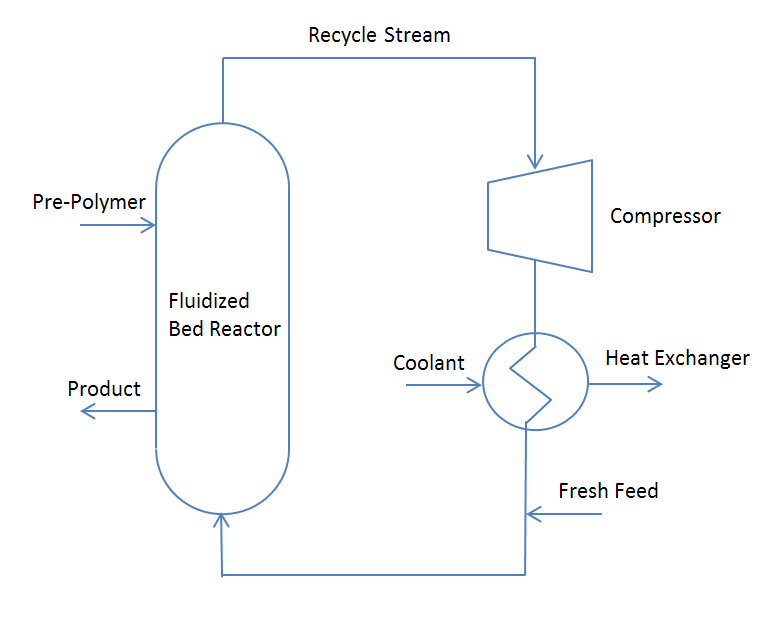Vapour Phase Polymerization
Vapour phase polymerization, also called gas phase or gas fluidized bed polymerization, is a widely used polymerization technique for gaseous monomers such as ethylene (LDPE, HDPE), tetrafluoroethylene (PTFE), and vinyl chloride (PVC). Many other common themoplastic polymers can be made by this method. This includes high volume resins such as propylene (PP), methyl methacrylate (PMMA), methyl acrylate (PMA), vinyl acetate (PVA), ethylene vinyl acetate (PEVA) and many other polymers that are stable in the gaseous phase. On an industrial scale, however, vapour phase polymerization is mainly used to produce HDPE, LDPE, and PEVA.
Fluidized bed polymerization was invented in the 1950s and the first commerical gas phase polymerization plant using a fluidized bed reactor was build by Union Carbide in 1968.1 The method has the advantage that it does not require any diluent and that no residual catalyst remains in the resin granulate or powder which is continuously removed from the reactor. A simplified flwo diagram of the process is shown in the figure below. A highly purified (olefinic) monomer gas is continuously fed into a fluidized bed reactor and combined with a dry-powder catalyst. Polymerization occurs at the interface between the fluidized catalyst and the polymer particles which are swollen with monomer during polymerization. The growing polymer particles sink downwards and are continuously removed at the bottom of the reactor and separated from residual monomer and pre-polymer which is fed back into the reactor. The monomer (mixed with gaseous diluent) is also continuously fed into the reactor and passes upward in the reactor through a series of vertical fluidized bed reaction zones. At the top of the reactor gas is removed, compressed and cooled and fed back into the reactor to control the temperature.

A typical gas phase polymerization of olefins takes place at 80 to 100 °C and 30 - 35 bar reactor pressure. The density of the polyolefin various between 0.91 and 0.97 g/cm3. Typical catalysts employed for ethylene polymerization are Ziegler-Natta, metallocene coordination, Phillips2, and transition metal catalysts.
Notes
The first commercial circulating fluidized bed reactor was build by the Standard Oil company (now ExxonMobil) in Baton Rouge in 1942 and was used for cracking of heavy gas oils to satisfy the growing demand of high-octane gasoline.
The most widely used Phillips catalyst is chromium oxide supported on silica/alumina.